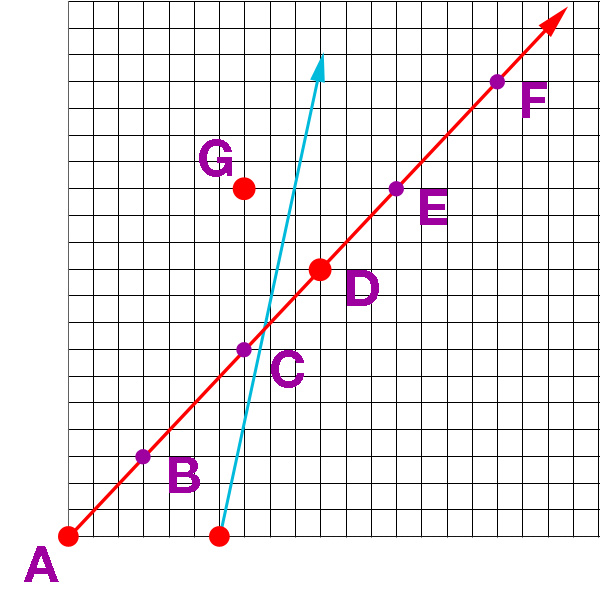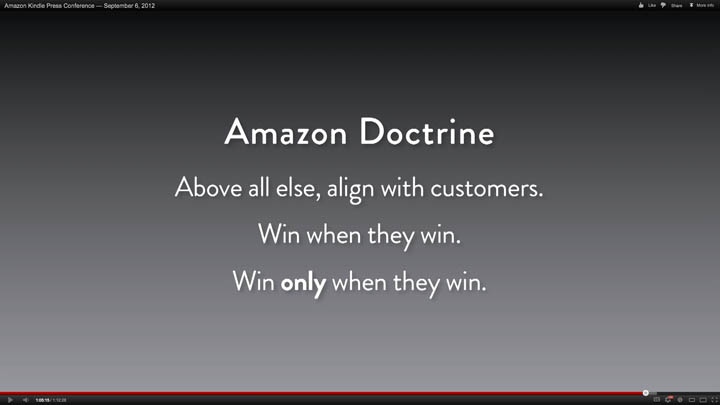The human brain is amazing. It can take a very limited amount of information, and turn around and give you an instant decision based on that limited information. Computers, on the other hand, are really bad at that. With a computer, all the variables must be filled in, or the program won’t run.
The Oakland A’s are trying to build a new baseball park. There are questions in the Oaklandsphere whether they should build it at the Coliseum or at Howard Terminal. Much of the debate around those questions takes place in a foggy, muddled soup of barely identifiable information about (a) how much the ballpark would cost, and (b) how much money it would make if they built it.
But hey, we’re human beings! Our lives aren’t math problems in a textbook. We go through our lives dealing with incomplete information almost all of the time, no big deal. Just because we have almost no idea at all about any of the money involved with this doesn’t mean we can’t end up deciding with conviction that we prefer one site or the other.
So we end up ignoring the information we don’t have and focus on information we do have. Or, we make wild guesses at the information we don’t have, and go with that. Or, most likely of all, because we’re human beings and building a ballpark is really not our job, we’re not going to spend any energy to think it through at all, so we’ll just stick with our gut reactions to the idea, and that’s good enough.
And therefore: messy, muddled ballpark debates.
Not really any different from any other debate in human affairs. It’s all cool.
EXCEPT.
Except: this is the Oakland Athletics we’re talking about.
The Oakland A’s. Team Moneyball. The organization out of all human organizations in all human societies in all of human history that is most famous for turning life into a math problem.
Back when statistical analysis in baseball started to become a thing, a lot of old school types tried to argue against it. And they kept getting their asses handed to them, because they didn’t understand sabermetrics. Their arguments (“Batting average and RBIs are good enough! Watch a game, not the computer!”) were utter crap. This is a point I’ve made before, but the best arguments against sabermetrics are made by the people who actually understand sabermetrics, who know what its true flaws and blind spots are.
Sure, the math in ballpark building is different from the math in baseball games. But sabermetrics is not just about the math. It’s about how you think about the game.
Remember this conversation in Moneyball?

People who run ballclubs think in terms of buying players. Your goal shouldn’t be to buy players. Your goal should be to buy wins. And in order to buy wins, you need to buy runs.
What is the ballpark equivalent of that conversation?
What do most people think the goal of building a ballpark is? What should that goal really be?
Let’s try to be creative. We may not have any of the numbers, but we can figure out how we would approach them if we did. Let’s try to move past muddled conversations, and think about how the A’s might be thinking about this ballpark. What would Jonah Hill tell Brad Pitt if they were building a baseball ballpark instead of a baseball team?
Let’s try to understand why the A’s might be making the choices they’re making. Let’s Moneyball a ballpark.
Investing and growth
Let’s begin by talking about investing. Why does anyone invest in any particular thing?
I think the most common (muddled) answer to that is, “to make a profit.” But that doesn’t answer the question. Because the question was, why does anyone invest in any particular thing? Lots of things make a profit. You could invest in a 1-year US Treasury bond today and make a profit of about 1.6% in that year. Or, you could invest in a 30-year US Treasury bond today and make a profit of about 2.3% a year over 30 years. Or–and here’s the rule of thumb to keep in your head–you could invest that money in a boring stock market fund and make a profit of (historically, on average) about 7%-10% a year. So why are you investing in that particular thing and not some other thing, like a Treasury bond or a stock market fund?
If we think of mere profitability as the goal–that as long as we don’t lose money, it’s fine–we don’t have a Moneyball mindset. We’re more likely to continue doing what we did before, because we didn’t lose money. This kind of thinking tends to lead people to prefer the Coliseum site, because hey, the Coliseum worked for 50 years, didn’t it? We can probably build a nice, cheap stadium on that site and make our money back in the end, so if it’s not broke, why fix it?
But if mere profitability is the end goal, the A’s ownership team probably shouldn’t invest in a ballpark at all. They should sell the team, and put the money in the stock market and make their 7-10% a year.
But when you start to think that an investment in a ballpark needs to grow at a rate greater than 10% a year, well, now we have a much more complicated question with a much more unclear answer. We should be asking, “What rate of growth are we trying to achieve with our investment?”
Volatility of outcomes
OK, suppose we get the growth idea. But there’s another kind of muddled thinking that comes with that, and that’s to make a single estimate of growth, and make a choice based on that. Suppose we estimate that the Coliseum site will grow at 15% and Howard Terminal at 30%. We should choose Howard Terminal, right? Not so fast.
Those single numbers are just estimates. In reality, there’s a whole range of possible outcomes. I think most people would guess that the range of possible outcomes at the Coliseum is smaller than at Howard Terminal. Suppose (pulling numbers out of the air) the Coliseum could grow somewhere between +10% and +20%, while Howard Terminal could grow somewhere between -20% and +50%. Are we willing to risk a big loss for a chance at spectacular growth? Or do we want a safe bet with a smaller upside?
There’s no obvious answer to that question. I can understand preferring the choice with the lowest downside or the choice with the biggest upside, but insisting that one or the other is obvious and clear is, well, obviously and clearly wrong.
So we shouldn’t be asking, “Will this make a profit or not?” We should be asking, “What is the range and distribution of possible outcomes, and how comfortable are we with those possible outcomes? What are our minimum acceptable and target growth rates for our investment?”
Ways to grow
That brings us to our third source of muddlement. When we say “grow”, what do we actually mean by that? How do we actually grow a business?
The ballpark translation of that first Jonah Hill sentence is probably something like, “people think if you build a nice ballpark, you’ll sell more seats.” Which, like “buying players” is both true and at the same time muddled. It’s not a Moneyball way of thinking about it.
The Moneyball way to think about it this is to start breaking it down like Jonah Hill does. In sabermetrics, you want to buy wins. In order to buy wins, you need to buy runs. Where do runs come from? Lots of different places: batting, running, catching, throwing, pitching, all of which have their subcomponents, each of which has its different price in the marketplace. What’s the most cost-effective way to purchase those subcomponents to assemble the runs and wins you need?
The Moneyball ballpark question then becomes: what’s the most cost-effective way to assemble the subcomponents of a ballpark that we need, in order to achieve the growth that we want?
Big Things and Little Things
On the baseball field, there are many statistical subcomponents you can try to improve on. Some of them, however, will have a bigger impact than others.
There is a statistic called the “Beane Count“. It was invented by writer Rob Neyer shortly after Moneyball came out, and is named for A’s executive Billy Beane. It tracks two main statistics, on each side of the ball. Those are:
- Walks
- Taking walks
- Not yielding walks
- Home runs
- Hitting home runs
- Not yielding home runs
If you look at Beane Count for 2019, the top 6 teams in Beane Count in the American League were the six teams that made the playoffs. In the National League, five of the top 6 teams in Beane Count were playoff teams, and the one that wasn’t, the Milwaukee Brewers, was 7th. So the stat correlates with the primary goal of winning.
But there’s another key feature of the Beane Count that is significant for our purposes here: these particular stats kind of give you something for free. On both walks and home runs, the ball is not in play. You don’t have to participate in defense and baserunning. So you win the game, in a way, by avoiding having to play the game.
If we want to translate this piece of Moneyball to ballparks, there’s an analogous game we want to avoid playing if we can. Making a profit selling things is a difficult game to play, and achieving growth is even harder. In the normal game, you make a product for [$X]. The supply/demand curve directs you to sell it for [$Y], and so you end up with a margin of [$Y – $X].
Can you sell enough volume at that margin to reach your growth target? If that seems hard, is there a way you can get something for nothing out of $X or $Y to make it work?
Let’s make a business equivalent of the Beane Count. Call it the Kaval Count, after A’s President Dave Kaval. It tracks the things you can do that help you avoid playing the straightforward business game. Like the Beane Count, the Kaval Count has two main ideas, each split into two sub-ideas:
- Covering costs externally
- Breaking the laws of supply and demand
- Become a tech company
- Become a monopoly
Subsidies
For decades, direct subsidies from local governments have been by far the #1 method for professional sports teams to reach their target growth numbers. Tell a city, “Help us pay for the cost of building our sports facility, or we will find another city who will.” In some parts of the country, cities have figured out that this is a bad deal. But as long as other parts of the country haven’t figured this out, it will continue being used.
So the Texas Rangers are constructing a new ballpark. How did they make the numbers work? They got someone else to pay for much of it. The Atlanta Braves also recently built a new ballpark. How did they make the numbers work? They got someone else to pay for much of it. The Oakland Raiders are building a new stadium in Las Vegas. Why? They got someone else to pay for it.
Oakland and Alameda County fell for this scheme in the 1990s, when they built Mount Davis to lure back the Raiders from Los Angeles. That plan did not work out at all, and the city and county are still deeply in debt from it. They won’t fall for that scheme again.
So direct subsidies for the A’s to build in Oakland are out of the question. However, there are certain infrastructural costs of construction that fall under the category of the normal activity of a city: building roads and transportation hubs and electrical grids and storm drains and sewers, etc. So while they may not get help subsidizing the building itself, it may still be politically feasible to get some of the surrounding infrastructure paid for. That alone is unlikely to get the A’s to their growth targets, but it may help some.
Arbitrage
Construction costs are not the only costs of building a ballpark. There is also the cost of the land we are building on top of.
In some cities, there is land which is zoned for one kind of use, but would be more valuable if it were zoned for some other kind of use. There is also the idea that the demand for land near a ballpark becomes more in demand simply because it’s near a ballpark.
In these cases, we’re not actually reducing the cost of building the ballpark. But we can arbitrage the difference between the value of the land without a ballpark, and the value of the land with a ballpark, and use that difference in value to finance the construction of the ballpark.
This is what the A’s are trying to do in Oakland.
Howard Terminal and the Coliseum are zoned somewhat differently, but most of the land for both sites is currently being used as parking lots. At Howard Terminal, it’s being used to park trucks while they wait for shipments at the Port of Oakland. At the Coliseum, it’s used to park cars for a bunch of sporting events that, because the Raiders and Warriors are moving, aren’t going to happen there any more.
So the question becomes, can the A’s acquire these land parcels at the value of a parking lot, and make them more valuable than a parking lot?
The government agencies who control these parcels have to try to figure out, how much is this land worth if they did nothing with it, or if they sold it to someone besides the A’s? The A’s have to figure out, how much could they make either parcel (or both parcels) worth if they built (or didn’t build) a ballpark on top of it? And somehow, those numbers have to work for both sides of the negotiations on the land.
This is where the arbitrage becomes a math problem. And we’re not the A’s, so we don’t have the numbers. We’re not doing the math. We don’t know if the numbers will work to meet the A’s growth minimums and targets or not. Best we can do from the outside is understand how the math would work on the arbitrage, if we did have the numbers.
And if the math works, it’s a more ethical way to finance a ballpark, because you’re not taking someone else’s money with no promise of returns or ownership in order to finance your own growth. You’re taking the inherent surplus value of a Major League Baseball team, and turning that, indirectly, into the money to build the ballpark.
Becoming a Tech Company
This is the Kaval Count element least likely to apply to a ballpark. But I want to bring it up, because it seems like the A’s under Kaval and COO Chris Giles have been trying to think like a tech company, even if the nature of their business doesn’t let them technically become one. Even if a ballpark can’t have the unique economics-busting properties of software, there are advantages to be gained by a tech-company approach.
I’m going to use Ben Thompson’s definition of a tech company from his blog, Stratechery:
Note the centrality of software in all of these characteristics:
- Software creates ecosystems.
- Software has zero marginal costs.
- Software improves over time.
- Software offers infinite leverage.
- Software enables zero transaction costs.
The question of whether companies are tech companies, then, depends on how much of their business is governed by software’s unique characteristics, and how much is limited by real world factors.
Software is a compelling thing to invest in, because it can break the laws of supply and demand. Usually, when you sell a unit of something, whether a product or a service, there is a cost to producing and distributing each unit. But with software, the cost is practically the same whether you sell one unit or one billion units. Your growth rate is never limited by supply, only by demand.
A ballpark is a physical asset, not a digital one. So it’s supply is necessarily going to be finite. The fire marshal will only allow a certain number of people into your space. You’re going to have a finite number of seats. You’re going to be limited by geographical distances; it’s hard to sell access to a ballpark in Oakland to someone in Oregon or Nevada, let alone Australia or Japan. So a ballpark can’t have the potential infinite reach that software can have. (Although, you never know, maybe some future AR/VR software may change that…)
But just because you’re too physical to have infinite reach doesn’t mean you can’t increase your reach by significant amounts, or even orders of magnitude. So let’s go through Thompson’s points, one by one:
Creating an ecosystem
The most valuable software platforms enable other people to find and create value on top of the software. This creates network effects, where the more people who are on a platform, the more useful the platform gets, which entices more people to join, and so on. Cyberspace ecosystems can grow exponentially into a winner-take-all status in a way that normal economic activity historically hasn’t.
The most successful ballparks do often create an ecosystem of other businesses around them. Bars, restaurants, parking lots and so forth all thrive when placed in proximity to a ballpark. Their loyal customers can become the ballpark’s loyal customers, and vice versa. Urban ballparks can have desirable network effects. But because this ecosystem is limited by geography, it won’t grow exponentially like software can.
Zero marginal costs
Software breaks the laws of supply and demand by having essentially an infinite supply. The cost of making the first unit of software sold is fixed, but any additional units adds almost zero additional costs.
A seat in a ballpark can only be sold a finite number of times over the lifetime of that seat. In addition, for every X number of seats you sell, you need to hire Y number of ushers and ticket takers and so forth. And there’s also the minor detail that in every professional sport, roughly half of all revenues end up going to the players on the field.
But if you start to think like a tech company instead of a traditional sports team, you can come up with innovations that look more like a zero-marginal cost product than a seat at at ballgame. The A’s Access program, introduced by the A’s in 2019, is a subscription of access to the ballpark instead of seat tickets. A’s Access may not be a zero-marginal cost product, but it has a lower marginal cost than a seat does. It allows the finite geography of a ballpark to be filled more fluidly over the course of a game and a season. That fluidity can enable a team to build a smaller ballpark, because you don’t need to hold as much inventory on hand to accommodate the same number of customers.
Improves over time
Subscriptions are attractive to both software companies and software customers. Software companies like them because they create a more steady and predictable stream of income. Customers (especially business customers) like them because they allow them to use the software flexibly with their needs without having to make any big up-front commitments.
The thing that makes the software subscription engine run is the fact that software keeps improving over time. A new version comes out regularly, and if you’re subscribed, you’ll automatically get the new and improved version. If it didn’t improve, people would probably prefer to just buy the software up-front and hold on to it as long as possible.
Traditionally, it is hard to say that a ballpark improves over time. It is a large building, and once built, changing it significantly is usually very difficult and expensive. In addition, the ballpark is designed to host a baseball team. Baseball is a zero-sum game. It is impossible to keep improving a baseball team forever. It’s going to cycle between good years and worse years.
Still, if you were committed to it, you could probably design a ballpark to be much more modular than they’ve been historically. You could plan to have different sections of the park be replaced by something new far more often than they have in the past. This would allow for more experimentation with various products, and allow the ballpark over time to keep evolving into something more attractive to subscribers and more profitable for the business.
I don’t see any evidence that the A’s have planned any modularity with their Howard Terminal renderings, which look rather monolithic. I find that a bit surprising, since the A’s under Kaval and Giles have been quite willing to shoehorn various sections of the old Coliseum into modular experiments.
Software offers infinite leverage
Basically, this means you can take the software you’ve built and move into any market in the world immediately and sell it.
Obviously, that’s impossible with a ballpark. You’re bounded by geography. But that doesn’t mean you don’t want to expand those boundaries, so you can reach as large an audience as possible. This is where the exact location of the ballpark and the ease of getting there matters.
Zero transaction costs
Of the five criteria for a tech company, this is probably the one where baseball fits most closely. To achieve zero transaction costs, you want purchasing your product to be entirely self-service. With individual tickets, you still have ticket booths, but many tickets are now sold online. Traditional season tickets tend to still be handled with salespeople, but there’s no reason the A’s Access subscription can’t be entirely self-service, as well.
Become a Monopoly
Growing a business profitably is really hard when there’s a lot of competition. Competition makes you have to fight for the available demand, downward pressure on your prices, and hence, profits. The only way to avoid that is to become a monopoly, and have no competition.
A totally pure monopoly is not really a thing that exists very often in the wild. A coffee shop may be the only coffee shop in a certain neighborhood, but it’s still competing with the coffee shops in the next neighborhood over, plus with the coffee you can buy in a grocery store and make at home. But even a small monopoly of some sort lets you keeps prices higher than you otherwise would without the competition, so it helps your profit margins.
Most professional sports teams have monopolies in their local markets in their sports. If you want to see Major League baseball in Denver, the Rockies are your only choice. But the Rockies compete with the Nuggets and the Avs and the Broncos for sports dollars, and with TV and film and theater and music for entertainment revenues.
Up until now, the A’s have probably held one of the weakest monopolies of any professional sports franchise. They share the Bay Area baseball market with the Giants. And up through the 2019 season, they’ve shared the relatively small Oakland sports market with the Warriors and the Raiders.
But that’s about to change. With the Warriors and Raiders leaving, the A’s are going to be the only major sports team in the East Bay. Their “Rooted in Oakland” campaign is designed to promote that fact. The A’s have an opportunity here to grab hold of a monopoly in the East Bay on the one hand, and then start competing harder in the adjacent markets if they can.
This is where the design of the new ballpark really matters. If the A’s build a ballpark that looks like every other sports facility, then they’re competing with every other sports facility. But if they can build something unique, that provides an experience that nobody else in the region or the world, can provide, then they would be creating another kind of monopoly that no one else can compete with. That’s why the A’s looked outside the box to find an architect who could bring something different to the table.
Of course, there are other ways to generate wins besides the statistics in the Beane Count, and there are other ways to generate profitable growth besides the elements of the Kaval Count. You can win baseball games by hitting single and doubles, and by playing great defense and baserunning. You can also win the traditional business game by selling a higher volume of a better product made at a lower cost than the competition’s.
The point is we want to think about the ballpark in a Moneyball fashion. In building a new baseball team, we’re not just replacing one player with another. In building a new ballpark, we’re not just replacing a bunch of seats around a baseball field with some other seats around a baseball field. We’re assembling a bunch of subcomponents as cost effectively as possible. Can we assemble those subcomponents in a way that they add up to reach our targets?
So why would the A’s choose Howard Terminal with its political and physical hurdles over the Coliseum? Well, maybe the math of those subcomponents tell them so. Maybe the math says there’s a bigger opportunity for arbitrage at Howard Terminal than the Coliseum. Maybe the math says an ecosystem in Downtown Oakland will create bigger network effects than an ecosystem in East Oakland. Maybe the math says they can leverage the location of Howard Terminal into a wider market, particularly of those coming off work both in Downtown Oakland and Downtown San Francisco, than they can at the Coliseum location. Maybe the math says can hold a bigger monopoly with a unique waterfront ballpark with a rooftop park with views over the bay than they can with some sort of ordinary ballpark at the Coliseum site.
And maybe there are reasons beyond the math for making some of these decisions. Maybe the A’s have goals for this ballpark beyond just economic growth. Maybe they really do want to make a cultural impact on the East Bay community with this ballpark, and they think they can do that better at Howard Terminal, numbers or not.
We can’t know for sure, of course. We don’t have the numbers, the A’s aren’t sharing them, so we can’t do the calculations ourselves. But we can take the time, especially when it’s our jobs to do so, to try to understand the way the A’s would think things through.






 Do you remember the first time you stepped into an
Do you remember the first time you stepped into an 


